What is Chip Art?
chip art Also known as silicon art chip graffiti or silicon graffiti refers to tiny works of art embedded in integrated circuits (also called a chip or IC).
Since IC is printed with lithography instead of building parts one at a time and there is no extra cost to add features to additional space within the chips. One of the reasons why designers started employing chip art is to discover the possibility that a manufacturer or designer copied their work.

Before the passage of the Chip Protection Act in the United States in 1984, several companies were using the term "graffiti" to prevent counterfeit chips. However, often they would also carry "contraband". Designers can create all sorts of artworks on chips, ranging from the basic initials of the designer to complicated designs. Because of the tiny dimensions of the chip the numbers are not visible without an optical microscope.
In the same period, the design cycle of products began to be cut in half and the digital design automation tools began to become more efficient, and funky designs that had previously been deemed acceptable were taken down. Also, consider the possibility that some graffiti damaged the chip on the embossed designs. Because of these changes, today's chip graffiti creators are testing the authority of technology and authority by tagging their chips with tiny Mona Lisa.
Chip graffitis is often described as an implementation of an egg that is software-based.
These Chip Graffiti are Interesting as Heck!
These records were examined through microscopes at the Strong Magnetic Field Laboratory at the University of Florida, led by Professor Michael Wesley Davidson (Microscopes, who gather all sorts of chips. They use microscopes to study the mysterious symbols that appear on them as if decoding the codes.
With the silicon graphics, MIPS microprocessor experts discovered that two Egyptian gods appeared to be focused on the mask of the chip that protects.
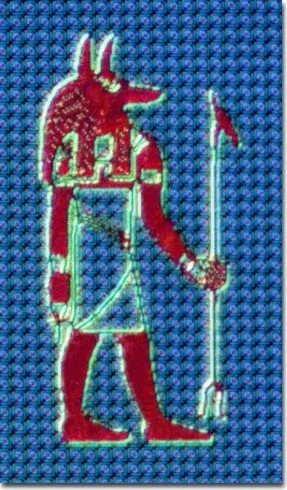
The silicon entice was discovered in the dark corner of Hewlett-Packard's FISO (FIFO) memory chip that is used in digital oscilloscopes.
The unidentified engineer who designed the graffiti also gave her the name "Fi-Fi", and the website has added "la femme" (in our perception, she appears like the figure of a woman)
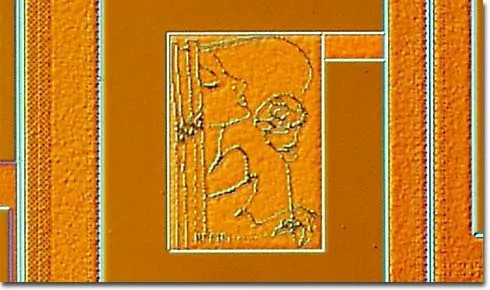
Godzilla, the mythical creature first introduced as a character in Japanese film in the year 1954 was found hidden on a tiny cushion within the Silicon Graphics MIPS R10000 microprocessor's circuit.

This exclusive model of Mickey Mouse was found on the Mostek 5017 clock chip with hands pointing at the 12th and seventh (creating an in-built fixed-time miniature silicon clock)
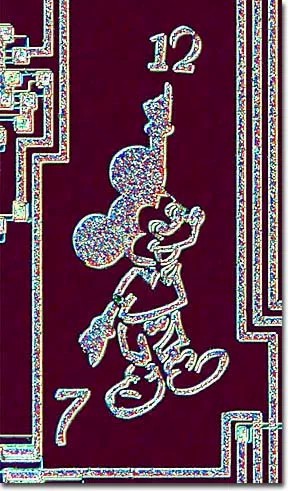
A chip designer has told us that miniature versions that are a miniature version of Tux, Linux penguins, are embedded into pad rings of unknown kinds and the functions of integrated circuits.

This beautiful rendition of Thor Thor, the Nordic god Thor was discovered in the Hewlett-Packard graphics chip.

The space shuttle was located inside Texas Instruments' Schottky digital bipolar integrated circuit.

This shark is in the sea on ADI's 21061 SHARC floating-point Digital Signal Processing IC.

The Pepsi logo was created on the integrated circuit which is part of the Hewlett-Packard CPU. It's probably the smallest advertising logo that has been created to date.

This is a magnified high-power view of hummingbirds that have been etched onto HP PA-RISC7000 microprocessor wafers. The inscription on the bird says: "this bird is for you".
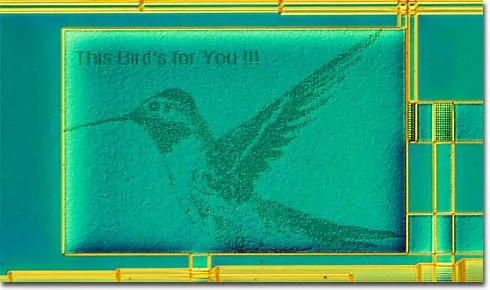
It's the Bugs Bunny that was found within the Cambridge Silicon Radio BC417143BQN chip and was regarded as the most loved rabbit on the planet. It is also the most compact rabbit on the planet.

The chips within Digital Equipment's MicroVax 3000 and 6200 minicomputers transmit messages from the Russian Cyrillic alphabet, a message to technicians from the other end of the Cold War who may try to reverse the engineering of VAX designs by looking more closely at the designs.
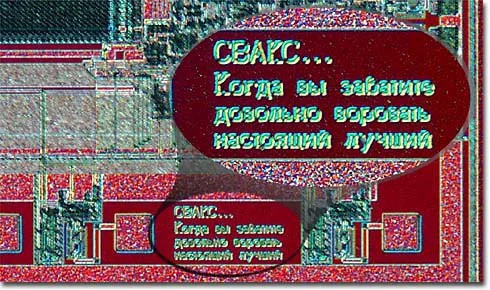
Final Thoughts
These images appear on chips that are simple for us to grasp since they are all the culture of the same generation as well as all of us however who knows if they will be a culture remnant of computer technology in the next couple of hundred years? If you have any other thoughts regarding chip graffiti, make an open comment!
 lin_marshall
lin_marshall
Discussions
Become a Hackaday.io Member
Create an account to leave a comment. Already have an account? Log In.